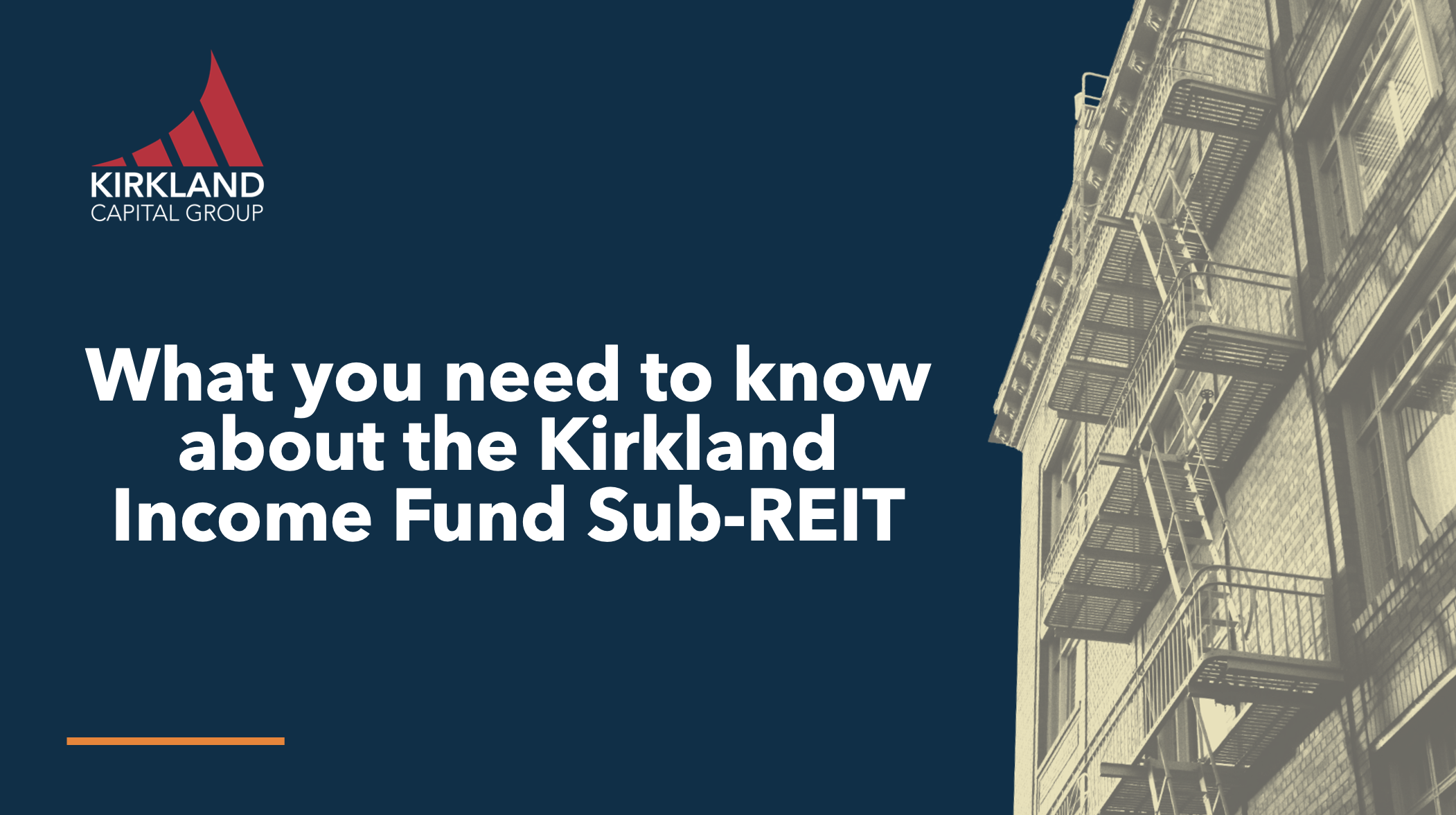Understanding the Advantages of the Kirkland Income Fund Sub-REIT
At Kirkland Capital Group, our foundational ethos is centered around being Investor Focused. This principle guided us in constructing our fund to prioritize our investors' best interests, ensuring that our fees, expenses, compliance, and operations are all in alignment with their needs. Consequently, we have adopted a Sub-REIT structure as part of our strategy to maximize returns and provide tax benefits to our qualified investors.
Imagine this scenario: You're an investor seeking opportunities that promise stability and growth. Your goal is to maximize returns while minimizing tax liabilities. This is where our Sub-REIT framework steps in. By seamlessly incorporating this structure into our investment fund, we not only enhance the profitability of your fixed income investments but also make them more tax-efficient.
In this article, we will guide you through the aspects of a Sub-REIT, its integration within our fund, and the myriad of advantages it brings. Whether you're a seasoned investor or a novice in the field, grasping the potential of a Sub-REIT structure could be the catalyst to unlocking the full power of your investments.
What is a REIT?
A Real Estate Investment Trust (REIT) is essentially a firm that owns, manages, or funds real estate assets that generate income. By investing in REITs, individuals can engage in the real estate sector without the need to own tangible properties themselves. This means you can benefit from real estate investments without the hassle of property management or the significant capital required to purchase properties outright.
One of the major advantages of REITs lies in their tax treatment. These entities must allocate a minimum of 90% of their taxable profits to investors through dividends, resulting in them being exempt from corporate taxation and enhancing the yield after taxes for qualified investors.
“A Real Estate Investment Trust (REIT) is essentially a firm that owns, manages, or funds real estate assets that generate income.”
What is a Sub-REIT Structure?
A Sub-REIT is a wholly owned subsidiary of the fund that elects to be treated as a REIT for tax purposes. This means that, like a traditional REIT, a Sub-REIT must distribute at least 90% of its taxable net income to the investors.
“A Sub-REIT is a wholly owned subsidiary of the fund that elects to be treated as a REIT for tax purposes.”
How Does a Sub-REIT Structure Work?
Loans are transacted directly to the Sub-REIT, while the loan holdings continue to be managed by the fund's manager. The Sub-REIT then distributes its net interest income as dividends to the investors. These dividends are taxed at the investors' individual rates, with the potential for up to a 20% Qualified Business Income (QBI) deduction, depending on the investors' unique tax situations.
Benefits to Investors in the Kirkland Income Fund
| Investment Structure | Sub-REIT | No Sub-REIT |
|---|---|---|
| Yield | 10% | 10% |
| Initial Investment | 100,000 | 100,000 |
| Net Return | 10,000 | 10,000 |
| 20% Tax Deduction on QBI | (2,000) | |
| Net Taxable Income | 8,000 | 10,000 |
| Income Tax (37%) | 2,960 | 3,700 |
| Income After Tax | 7,040 | 6,300 |
| Return % After Tax | 7.0% | 6.3% |
Minimal Fund Disruption: The Sub-REIT framework allows us to maintain the existing economics and fee structure of the fund, ensuring a seamless transition for our investors. This means that you can continue to enjoy the same investment experience without any significant changes to the fund's operations.
Elevated Yield: By reducing the tax liability associated with the fund's interest earnings, the Sub-REIT structure delivers an elevated after tax yield to investors. Fund income is generally taxed to members as ordinary income, except for distributions from the Sub-REIT that are eligible for the QBI deduction. The table to the right illustrates this, with the Sub-REIT structure able to deliver 70 basis points higher after-tax return, assuming the highest tax rate of 37%.
Simplified Tax Filing: Investors benefit from no state-sourced income, eliminating the need for multiple state income tax filings. This simplification can save you time and reduce the complexity of your tax filing obligations.
UBTI Blockage: The Sub-REIT structure blocks the generation of Unrelated Business Taxable Income (UBTI) from any leverage used by the fund. This provides additional tax benefits and ensures that your investments remain as tax-efficient as possible.
In conclusion, the Sub-REIT structure at Kirkland Capital Group offers a strategic and tax-efficient way to enhance our investment portfolio. By leveraging this structure, we can provide our investors with higher after-tax yields, simplified tax filings, and minimal disruption to the fund's operations. This approach not only enhances returns but also ensures a seamless and efficient investment experience. Join us in unlocking the full potential of your investments with the Kirkland Income Fund.
When you have questions about this article or about the Kirkland Income Fund, please email me at chriscarsley@kirklandcapitalgroup.com or book a time on my calendar for a call.
Disclaimer: The information provided in this article is for informational purposes only and is not intended as tax advice. While we strive to provide accurate and up-to-date information, tax laws and regulations are subject to change. We recommend consulting with a qualified tax professional for personalized advice and guidance regarding your specific tax situation.

